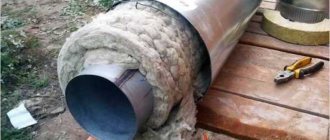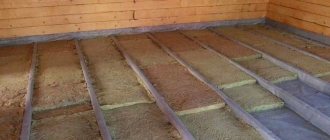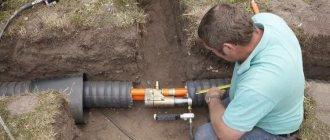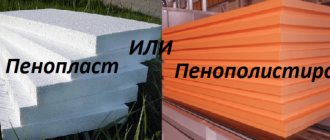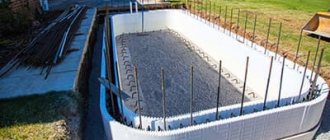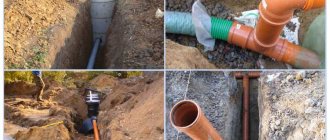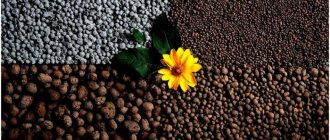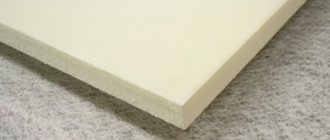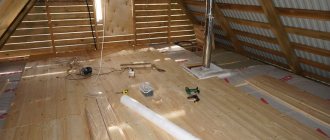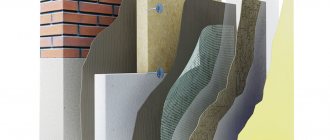Pros and cons of polyurethane foam
Advantages
Judging by the reviews and technical properties of polyurethane foam, we can highlight a number of advantages that this insulation material has:
- When treating the surface with polyurethane foam to insulate it, no seams or cracks are formed. As a result, the heat loss coefficient is much lower than that of boards made of extruded polystyrene or other similar material.
- Judging by the reviews of both experts and ordinary owners of buildings with such treatment, polyurethane foam for insulation provides excellent sound insulation.
- In most cases, a 50 mm layer of polyurethane foam is enough to provide high-quality thermal insulation.
- Transporting the substance is much cheaper than slabs. It's all about the compactness of both the installation and the material.
- PU foam can be used at temperatures from -150 to +220 degrees Celsius. Therefore, it can be used in construction anywhere in the world. Moreover, scientists actively use this substance in the creation of aerospace technologies.
- The use of material allows you to significantly strengthen the roof.
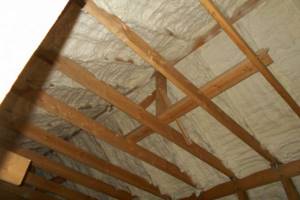
- High thermal inertia allows polyurethane foam for insulation to retain heat indoors even in the strongest winds. This is evidenced by numerous reviews from home owners from cold regions.
- Polyurethane foam has a low water absorption coefficient. It is not surprising that it is often used to create reliable waterproofing. Thanks to this property, the substance has found wide use in roofing.
- When applying polyurethane foam, special equipment is used. A significant part of it is the gun, with which you can regulate the spraying speed. This greatly speeds up installation and makes it more economical, at least that’s what reviews say.
- The substance has high heat resistance and biological neutrality. It is safe for both the environment and humans, but spraying must be carried out with a mask and goggles. Otherwise there may be serious consequences. As you can see from the reviews.
- The service life of polyurethane foam for insulation can reach 50 years.
According to reviews and expert opinions, polyurethane foam insulation has many advantages. If we talk about those that gave it a key advantage in the market, then it is the speed of installation and ease of transportation.
Separately, we need to talk about the benefits that industrial facilities receive. Take, for example, grain storage and vegetable storage. These objects are often susceptible to attack by rodents and insects. But the biological properties of polyurethane allow it to be an insurmountable obstacle for the former and the latter.
Flaws
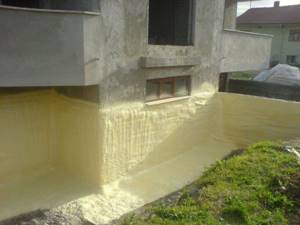
Unfortunately, despite its more than outstanding advantages, polyurethane foam insulation has its drawbacks:
- The material is vulnerable to ultraviolet rays. Under their influence, accelerated destruction of the structure is observed. However, you can find out about this from the reviews.
- It is not recommended to use polyurethane when it is necessary to insulate a roof consisting of corrugated sheets or metal tiles. The fact is that due to the lack of a gap, condensation begins to form. As a result, the roof surface is destroyed. But reviews on this issue largely contradict each other.
- The price of the material itself is not that low. Moreover, to spray it you will need to rent or purchase special equipment.
At first glance, polyurethane foam, which is used for insulation, has much fewer disadvantages than advantages. But it's not that simple. Judging by the reviews, most of the disadvantages of this substance are leveled out or quite easily eliminated.
Take, for example, rapid deterioration under ultraviolet light. It is enough to take paint and apply it to polyurethane for insulation, so that the service life of the substance will be extended for several decades. Moreover, there are other alternative methods of protection. Suffice it to recall at least plaster.
Now regarding the price. If calculated in cubes, then polyurethane foam for insulation requires significantly less than the same extruded polystyrene. On average, savings are about 20 percent. If we remember the reduction in transportation and hiring costs, the level of savings will be even higher.
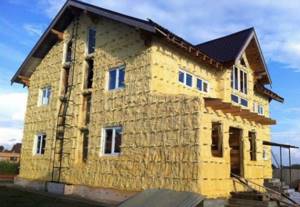
The fact is that if you use polyurethane foam for insulation, then judging by the reviews, you can handle an area of 400 square meters in about 8 hours. If you process it using extruded polystyrene slabs, you need at least three days. This is taking into account that about seven workers with appropriate qualifications will work for you.
This is exactly how many workers, if you look at the reviews, are needed to complete the work in the shortest possible time. In turn, one person can handle spraying polyurethane foam for insulation. Reviews also testify to this.
The best manufacturers of polyurethane foam
The ranking of well-known manufacturers of polyurethane foam is headed by brands that have earned recognition in the construction industry.
Soudal
The brand has factories in Poland, Belgium and Slovenia. Soudal brand products provide a structure that meets high European standards and a good yield volume. The sealant does not darken or deform over time, and the durability of the product is impressive.
Krimelte
The manufacturer from Estonia (Penosil brand) offers a variety of models of polyurethane foam for various purposes. Krimelte products are known in the professional environment for their decent price-quality ratio.
Titan
The Orion brand, with production facilities in Turkey, Spain and Poland, ranks third in the popularity rating among polyurethane foam suppliers. Products of this brand foam well without secondary expansion.
Moment of installation
The products of a well-known brand are in demand due to their decent quality and availability of solutions.
Ultima
The brand produces good quality polyurethane foam, the products are easy to use. Judging by consumer reviews, the sealant of this brand does not have an acceptable level of efficiency.

Foam for wall insulation
Axton
The company produces a sealant with high odorless polymerization characteristics, while reviews indicate low adhesion and high porosity of the structure.
Titan02
The highly popular mounting foam Titan02 is available in a winter version and with increased fire resistance. The product demonstrates exceptionally high efficiency when installing window and door structures. It is actively used in the repair of utility systems, sealing and thermal insulation of buildings. Titan02 sealant is sold within 230 rubles.
Penosil
The product is distinguished by its density and uniformity of structure with a large output volume. It is used for installation of structures, filling seams and cavities of varying complexity. The model range also includes special versions for foam plastic. The cost varies from 220 rub.
Technical characteristics of polyurethane foam
Judging by the reviews, PPU insulation has both its pros and cons. Fortunately, all of them can be eliminated if you take the right steps. But for this to become possible, it is necessary to understand in detail the technical properties of the material.
All polyurethane can be divided into hard and soft. For construction work, in most cases the first one is used, judging by the reviews. It is excellent for insulation and at the same time is resistant to various types of mechanical influences.
Judging by reviews, one of the important technical properties of the material is corrosion resistance. Moreover, polyurethane foam does not allow water to pass through and is able to withstand the influence of aggressive chemical environments.
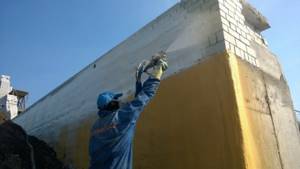
It is necessary to learn about the thermal conductivity of polyurethane foam for insulation from specialized literature, and not from reviews. This parameter directly depends on the size of the cells that make up the basic structure of the substance.
Attention! The thermal conductivity of polyurethane foam ranges from 0.02 to 0.04 W/m.
This is a good indicator if you need to insulate a room. This is evidenced by numerous reviews. It is enough to look at expanded clay to understand how high the performance of polyurethane foam is. The thermal conductivity of expanded clay is about 0.14 W/m. For foam glass it is even higher. Even mineral wool cannot compare with polyurethane foam.
The ability to absorb sounds depends on several parameters:
- elasticity,
- bandwidth,
- thickness.
Separately, it is necessary to mention the damping properties. This information is also confirmed by reviews of professionals who have been insulating rooms and houses using polyurethane foam for many years.
Advice! You consider polyurethane foam of the semi-elastic type to be the best for noise protection.
Separately, it is necessary to talk about the properties of polyurethane foam, which appear upon contact with chemicals. According to expert reviews, polyurethane foam cannot be destroyed even by caustic chemicals. Moreover, it can easily withstand the influence of gasoline, oil, plasticizers, alcohol and acid.

Another important property of polyurethane foam, based on reviews, is the protection of metal from corrosion. It is enough to apply polyurethane foam to the metal, and you will not only receive high-quality insulation, but also protect the building from destruction.
An important property of polyurethane foam for insulation, judging by reviews, is low moisture absorption. The performance of this material is impressive. During the day, the structure will not retain more than three percent moisture. This is a good indicator.
Attention! The higher the density of polyurethane foam for insulation, the lower its water absorption. However, you can find out about this from the reviews.
How to spray thermal insulation
Foam insulation is easy to apply , which does not require the involvement of significant labor or the use of complex installations or units. The use of such materials is allowed on vertical, horizontal and inclined surfaces (floors, walls, ceilings, partitions), as well as structures with complex shapes (decorative finishing, plumbing fixtures).
Even one person can apply insulation in cylinders. The lightweight cylinder can be carried, lifted and operated without noticeable effort. The volume of material consumed is calculated based on the available number of containers (1 cylinder = 1 sq. m of insulation).
Regardless of the surface area, time of year and other factors, the order of applying thermal insulation material is approximately as follows:
- Clean the base from dirt, remove dust and moisture accumulation.
- Repair damage to surfaces made of brick, concrete or wood to prevent further destruction of the base and insulation.
- Degrease the substrate with acetone or an available solvent to remove oil stains and improve adhesion.
- Prepare the gun for Polynor insulation by fixing the spray gun and removing the protective cover. Shake the container well before use. Before use, it is recommended to store the container at temperatures not lower than +18−30 ºC.
Polynor balloon insulation is equipped with a universal nozzle for controlling material consumption through the dosage of force on the handle. During the application of foam, the container must be shaken periodically to ensure better spraying. It should be borne in mind that before it hardens, sprayed thermal insulation remains harmful to health, so it is imperative to work in protective clothing, gloves, and goggles.
Insulation without much effort
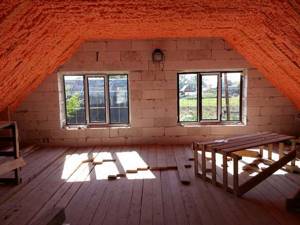
The process of applying insulation does not require special knowledge, and practice comes with the first used cylinder. If you can handle spraying air freshener or deodorant, then working with spray polyurethane foam will be up to you. You can easily seal difficult and uneven surfaces by applying more or less material in the right places, filling cracks and seams. The speed of insulation work is a distinctive feature of sprayed polyurethane foam.
Spray polyurethane foam requires no handling effort after application. It does not require a vapor barrier, like mineral insulation, and it does not need to be attached to dowels, like expanded polystyrene. This saves not only time, but also money both for the material and for the labor of workers, and equalizes the types of insulation in cost.
Insulating the attic with polyurethane foam
A spoon of tar
There is no ideal insulation for all types of structures. For example, we do not recommend using polyurethane foam to insulate a wooden house if you initially wanted a house with its own microclimate and breathable walls. Sprayed polyurethane foam creates the effect of a thermos. Condensation will not appear between the wood and the insulation, because there will be no gap between them. But in such a house forced ventilation is needed.
Sprayed polyurethane foam burns, therefore it has a G3 rating, but does not support combustion.
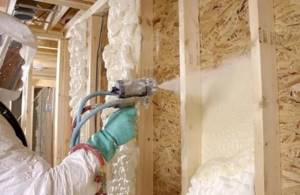
Thanks to its monolithic seamlessness, sprayed polyurethane foam will not allow a fire to quickly break out inside the building. This happens due to the tightness that the material creates - there is no draft from the outside of the house.
When sprayed, the material will emit an odor. This is a temporary inconvenience that goes away after ventilation. The dried material no longer smells. If the work is to be done indoors or in the basement, we recommend working in a respirator. When working in the house, open windows will be enough.
There are also a number of disadvantages: low foam yield, poor quality, incorrect material consumption indicated, and others. Most of them were born from not knowing how to use the material correctly. To do this, we have compiled step-by-step instructions for use for you, with tips and little tricks from the experts.
Sprayed polyurethane foam is easy to use and effective insulation. Now, knowing its strengths and weaknesses, you can use it in the right place and not worry about the durability of the insulation.
Wall insulation using polyurethane foam
Most popular brands
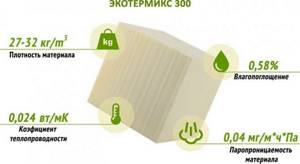
The construction market is filled with foam insulation materials of domestic and foreign production. The following brands received the greatest number of positive reviews:
- Ecotermix;
- Titanium;
- TechnoNIKOL;
- Technology;
- Teplis;
- Polinor;
- Phorum;
- Penosil;
- Penoplex Fastfix;
- Home master;
- Sipur;
- Tri color.
When choosing a material, you need to carefully study the instructions for use, last of all, focusing on the price of the product.
Where is the material used?
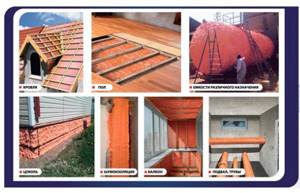
New generation foam insulation is used for external and internal application. Depending on the characteristics of the objects, materials with open and closed cells are used.
Spraying is carried out on the following structures:
- Roofs of residential, commercial, administrative buildings and engineering structures. Since the main heat losses occur through the roof, a layer 10-15 cm thick is applied for high-quality insulation. When working in attic spaces, no additional finishing is required. Sprayed Polynor insulation, once cured, forms a durable outer skin. There are no odors or discharge.
- Technological containers. The use of polyurethane foam in cylinders for insulation of various tanks helps maintain a given temperature in them with minimal energy consumption. Domestic and industrial boilers are filled with polyurethane, foam is applied to the walls of swimming pools, storage facilities and other containers for storing and transporting various liquids that require stable conditions. In addition to tanks, foam is used to insulate pipes connected to them with a diameter of 20 cm or more.
- Walls. For harsh climates, Polynor insulation is an excellent solution to the problem of combating freezing of load-bearing structures. The material is in no way inferior in its characteristics to Penoplex roll insulation, surpassing it in speed of application and durability. The thickness of the layer varies between 5-10 cm depending on the type of structure and climate characteristics. Spraying is carried out inside the lattice frame, which is then covered with decorative cladding.
- Floors. A thick layer of PP is an excellent protection against cold and dampness coming from the ground or unheated basements. The material is applied to a concrete slab or subfloor in a wooden house. The lathing is pre-made, which is the basis for laying the finishing or intermediate coating. Ventilation of rooms is achieved by installing vents. The recommended application layer is 7-10 cm.
- Attics. Insulating these residential buildings with polyurethane foam allows you to create comfortable living conditions at any time of the year. To create a reliable barrier from cold and heat, you should spray at least 15 cm of foam. After this, the internal surfaces of the attic are sheathed with plasterboard, plywood or solid boards.
Depending on the treatment area, industrial equipment or one-time sprayers are selected.
Types of sprayed insulation
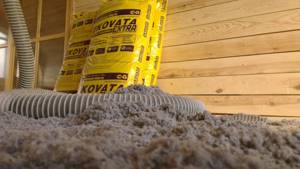
The technology of insulating objects with foam is naturally considered the most effective and promising. To achieve a high-quality result, you should familiarize yourself with the types of sprayed insulation and the procedure for their use. Products are divided into ready-to-use and those requiring preliminary preparation.
Sprayed thermal insulation in cylinders is freely available and is familiar to almost every home craftsman. Aerosol cans sold in hardware stores have a capacity of 500-1500 ml. Inside there is a liquid composition saturated with compressed air. Various models have their own bell or are designed to be installed in a special gun. Spraying is carried out after shaking and turning the product upside down by pressing the trigger. One 1000 ml can is enough to form 20 liters of foam or cover 1 m2 of surface with a layer 2 cm thick. This type of insulation can be used to treat small surfaces up to 10 m2. But even in this situation, 25 cans will be required to create a layer of 5 cm, which is the minimum acceptable when arranging buildings.
Industrial mixtures are made from several liquid components immediately before use. The raw materials consist of a base composition and a hardener. For this purpose, sealed containers, a high-pressure hose, a spray gun and a pneumatic installation are used. The optimal temperature for work is +20-25°C. Deviations lead to the solution foaming too weakly or too strongly. Both options lead to deviations in performance characteristics from the norm. If weather conditions do not meet the required conditions, the solution is heated or cooled.
The material is supplied from the bottom up, the thickness of each layer should be within 3-4 cm. To achieve the desired effect, you need to treat the surfaces 2-3 times after the previous layers have completely cured.
When using industrial equipment, you need to wear skin, eye and respiratory protection. The substance has the highest degree of adhesion and is extremely difficult to remove from the body, clothing and surfaces. Therefore, places that do not need insulation must be securely closed.
